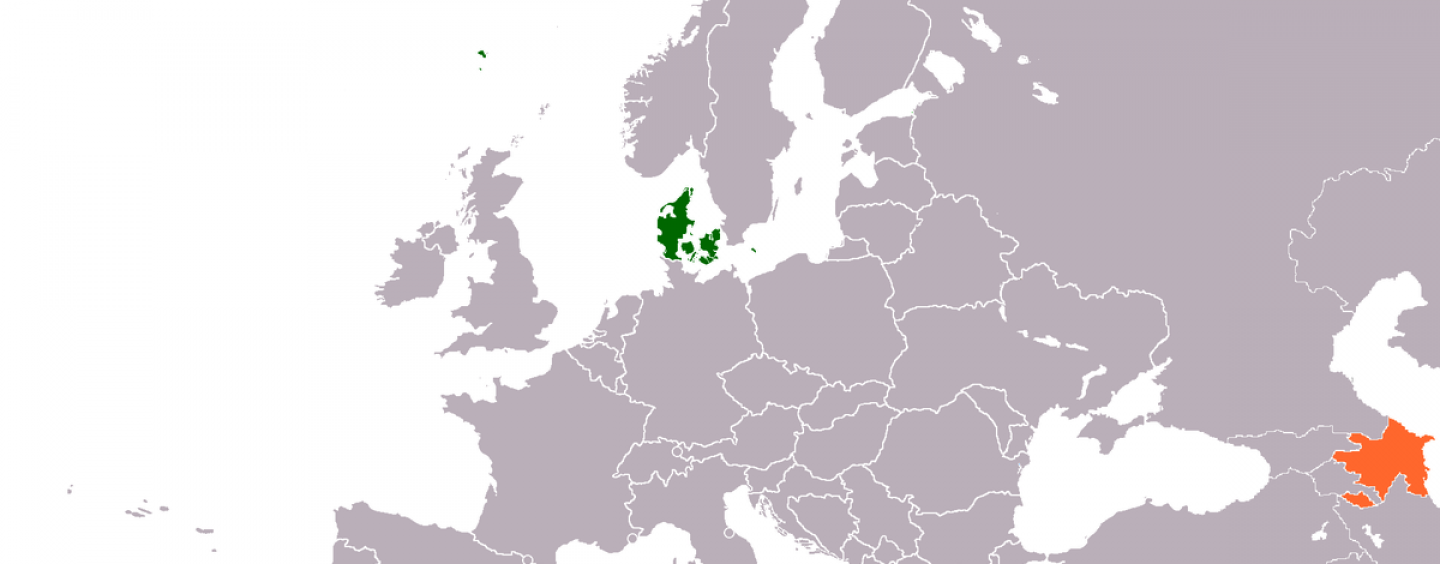
Green energies offer new opportunities for Azerbaijan and an example to follow: Denmark
By Dr Carsten Sander Christensen
Renewable energy is a collective term for bioenergy, wind energy, solar energy, wave power, geothermal energy, hydrology and other technologies that differ from coal and other fossil fuels by, among other things, being CO2 neutral. The use of renewable energy sources contributes to reducing our emissions of greenhouse gases and to making Azerbaijan independent of fossil energy. In this article, we will take a look at the implementation of renewable energy and its development in the period 1990-2022 in Denmark as an example how to implement renewable energy within a short period of time. Denmark could, therefore, be a possible new green energy partner for Azerbaijan.
COP 29 in Baku and green energy zones
Hosting the United Nations Climate Conference, COP 29, in November 11-22, this year in Baku, Azerbaijan presents the country with unique challenges and significant opportunities to demonstrate leadership in addressing global climate challenges. Even though, as one of the largest fossil fuel-exporting countries, Azerbaijan is also committed to transitioning to sustainable energy sources and to achieve sustainable goals, both nationally and internationally.
Recently, the President of Azerbaijan, Ilham Aliyev participated in the inauguration of the Zangilan and Shayifli hydroelectric power plants near the Okhchuchay river in the Zangilan district in the south-western part of the country. The two hydroelectric power plants will generate a combined sixty million kilowatt-hours of green energy yearly, saving fourteen million cubic metres of gas and reducing CO2 emissions by 28,000 tons. Only one example of how the new green policies in the field of hydrology are implemented in Azerbaijan. Furthermore, that fits perfectly in line with President Ilham Aliyev’s directive to create a green energy zone and transform the liberated areas into carbon-free zones.
Denmark and Azerbaijan
Air pollution is very high in the Baku area, therefore a large reduction of CO2 from car exhaust gases, factories and other industrial facilities would be beneficial for both the environment and the health of the population. The weather in the Baku region is very windy and very sunny. In fact, an Eldorado for wind energy and solar energy. Wave energy in the Caspian Sea could also be an option in the new green energy zones on sea. Furthermore, bioenergy is also an important option in a region with a little less than 3,000,000 inhabitants. In the renewable energy sources mentioned in this paragraph, it would be a good idea for Azerbaijan to look for green energy partners not only in Asia but also in Europe. Denmark is an example of such a green energy partner, especially in wind energy and bioenergy. With wind mill factories and biogas plants of highest level on the market. Let us, therefore, take a look at Denmark’s implementation of renewable energy in the last decades.
Denmark – Free of fossil fuels in 2050
It is a political vision that Denmark must be free of fossil fuels by 2050, i.e. in just under 30 years. Since society is unlikely to need less energy in the future, this means that alternative forms of energy must be found to replace the old ones, and that energy must be used more efficiently. In Denmark, this has meant that biomass, wind and solar energy in particular have boomed over the past decades. At the same time, the consumption of fossil fuels such as oil and coal has gradually decreased.
This means that while Denmark’s total consumption of renewable energy in 1980 was 22 Petajoules (PJ), in 2017 that figure had risen to 244 PJ. Thus, just over 34 percent of all energy used in Denmark in 2017 was renewable energy. This therefore applies to the total energy account, both district heating, electricity and everything else. In 2020 the figure was 700 PJ and two years later the total consumption was 675 PJ. Just over 81 percent of all energy used in Denmark in 2022 was renewable energy.
Decrease in the consumption of fossil fuels
The consumption of natural gas fell by 29.3 per cent in 2022. This was partly because the high natural gas prices encouraged households and businesses to save. At the same time, bio-natural gas made up a larger share of pipeline gas, just as the weather was warmer than usual last year. The consumption of coal and coke fell by 1.8 per cent. and thus continues the downward trend seen in recent years. Since 1990, the consumption of coal and coke has been reduced by 82.8 per cent. In the opposite direction, an increase in oil consumption for aviation of around 70 per cent pulls as a result of higher travel activity after the two corona years.
Large increase in the share of green electricity
The production of electricity based on renewable energy grew in 2022 to 81.4 per cent. of the domestic electricity supply against 71.9 per cent. in 2021. Here, wind power contributed 53.6 per cent, while biomass accounted for 18.9 per cent. and solar energy, hydropower and biogas the remaining 8.8 per cent. More generally, the actual consumption of renewable energy fell by 1.2 per cent. in 2022 as a consequence of a large drop of 29.0 per cent. in the consumption of wood pellets, while the consumption of biogas and solar energy increased by 10.2 per cent respectively. and 48.1 per cent
Decrease in the emission of CO2
Denmark’s actual CO2 emissions from energy consumption fell by 0.2 million tonnes to 27.7 million tonnes in 2022. When emissions are corrected for fuel consumption linked to electricity trade and climate change, CO2 emissions fell by 4.4 per cent. to 28.7 million tons. Since 1990, the corrected CO2 emissions from energy consumption have fallen by 53.1 per cent.
Bioenergy
In Denmark, bioenergy is the energy stored in organic matter or biomass. The biomass can be burned directly or processed into various types of fuel, e.g. wood pellets, biogas or bioethanol. Some biomasses are vegetable, e.g. straw, wood and algae. Other biomasses are animal, e.g. animal manure and fat from animals. Bioenergy makes up more than 2/3 of Denmark’s total consumption of renewable energy and is a growing area, as many power plants switch from fossil energy to wood pellets, chips or straw.
Biogas production is growing strongly and is expected to triple from 2012 to 2020. Biomass can be stored, which is not yet a commercial option for wind and solar energy. Therefore, bioenergy can play an important role in ensuring security of supply in a future energy system with a very high proportion of renewable energy.
Bioenergy plants are usually placed in open countryside, where you can control the odour nuisances caused by the plants. However, the establishment of certain plants causes problems from the neighbours of the plant. This is because the plant can affect property prices in the area, just like the odour nuisance damage the neighbours’ freedom of movement on their properties.
Wind energy and wind farms
In 2016, wind energy accounted for 37.6% of the total Danish electricity supply. In 2022 this figure was 53,6%. At the same time, the installation of new wind turbines on land is one of the cheapest ways to expand electricity production. Wind energy is thus one of the most widespread forms of renewable energy in Denmark, and it is the form of renewable energy that has come the furthest in terms of being competitive compared to other forms of energy. Wind turbines can be set up both on land and at sea.
If bioenergy is characterized by protests, then the location of wind turbines can make the citizens who are neighbors to wind farms even more angry. The next major project is therefore to place six wind farms in the waters around Denmark. These six wind turbine farms must produce electricity for what is consumed in 10,000,000 households. Examples are locations of wind turbines and wind turbine farms in nature parks on land. Like the bioenergy, wind turbines can affect property prices in the area. But there are other problems with the location of the wind turbines. Noise nuisance, problems in strong storms with falling blades and worst of all the suspicion that the wind turbines can cause cancer in the nearest neighbourhoods.
Typically, conventional hydroelectricity complements wind power very well. When the wind is blowing strongly, nearby hydroelectric stations can temporarily hold back their water. When the wind drops they can, provided they have the generation capacity, rapidly increase production to compensate. This gives a very even overall power supply and virtually no loss of energy and uses no more water.
Solar energy
In Denmark, solar energy is used in two ways: 1) Solar cells are used to produce electricity. In 2015, the Danish solar cell plants produced electricity corresponding to 1.8 per cent. of the total Danish electricity consumption. And 2) Solar collectors are used to heat buildings and to produce district heating by allowing the sun’s rays to heat the water. Solar collectors are often combined with a heat pump. Electricity production from solar cells in Denmark in 2022 covered 6.1 per cent. of the Danish electricity consumption, and within the next few years it is expected, according to the Danish Energy Agency’s Analysis requirements for the Energinet 2022, that solar energy will make up approx. 12 per cent.
A smaller minus with solar systems is as follows. An inverter for solar systems is equipped with a number of electronics that cannot withstand overvoltage caused by lightning and thunder. Therefore, you will experience errors on solar cells. To protect your solar cell system from lightning and thunder, you can turn off the solar cell system if there is a warning of, for example, cloudbursts or lightning and thunder.
Openness, mutual understanding, and the pursuit of common goals will remain the foundational principles of Azerbaijan and their future world partners in the country’s path to be a fossil free area. Azerbaijan needs of course the most modern technologies from the European countries. European partners are important in the implementation of the renewable energy in the richest country in Transcaucasia. And always have in mind that it’s better to have many partner countries with special skills in certain energy areas, instead of putting everything on a partner country on Azerbaijan’s path to a green future.





